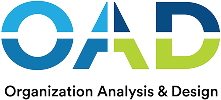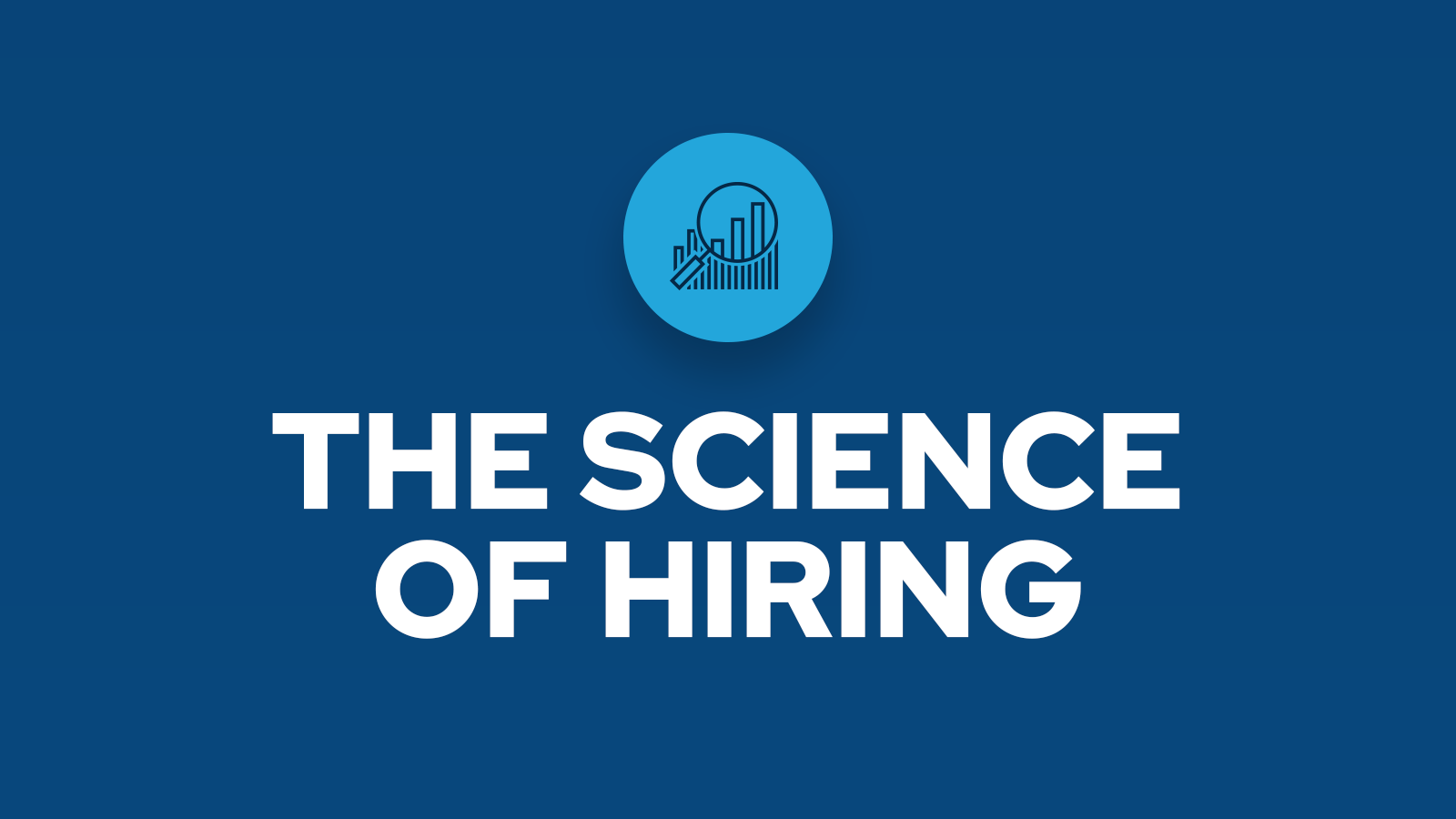Hiring should build momentum—not burn it.
If your process feels like an endless loop of resumes, interviews, and regret, it’s time to fix what’s broken.
Here’s how to turn your hiring process into a strategic advantage that attracts and retains the right candidates.
Table of Contents: The Effective Hiring Process
- Why Most Hiring Processes Fail (And How to Fix Yours)
- Build a Talent Magnet, Not Just a Job Posting
- Streamline Your Interview Process Without Losing Depth
- Use Behavioral & Data-Driven Tools to Evaluate Candidates
- Improve Candidate Experience from Application to Offer Letter
- Retain Talent with Strategic Onboarding & Feedback Loops
- Final Thoughts – Your Hiring Process Is a Strategic Asset
Why Most Hiring Processes Fail (And How to Fix Yours)
For many companies, hiring feels reactive. You lose someone, scramble to post a job, rush interviews, and hope the new hire sticks. It’s not a strategy—it’s a cycle.
The problem? Most hiring processes prioritize speed over alignment. A rushed job posting, a few generic interview questions, and a gut-check are no match for today’s talent expectations. And yet, this is the default for countless organizations.
Jeff Bezos once said, “I’d rather interview 50 people and not hire anyone than hire the wrong person.” That mindset isn’t just for billion-dollar companies—it’s how smart organizations avoid costly misfires. According to the Society for Human Resource Management (SHRM), the average cost of a bad hire is over $17,000—and that doesn’t even factor in culture disruption or lost morale.
So what’s the fix? Start by treating your hiring process like a strategic growth system, not a short-term task. That means having clear standards, data-driven evaluations, and a structure that attracts—not just filters—talent.
The benefit of improving your recruitment process is greater efficiency, better hiring outcomes, and an enhanced organizational reputation.
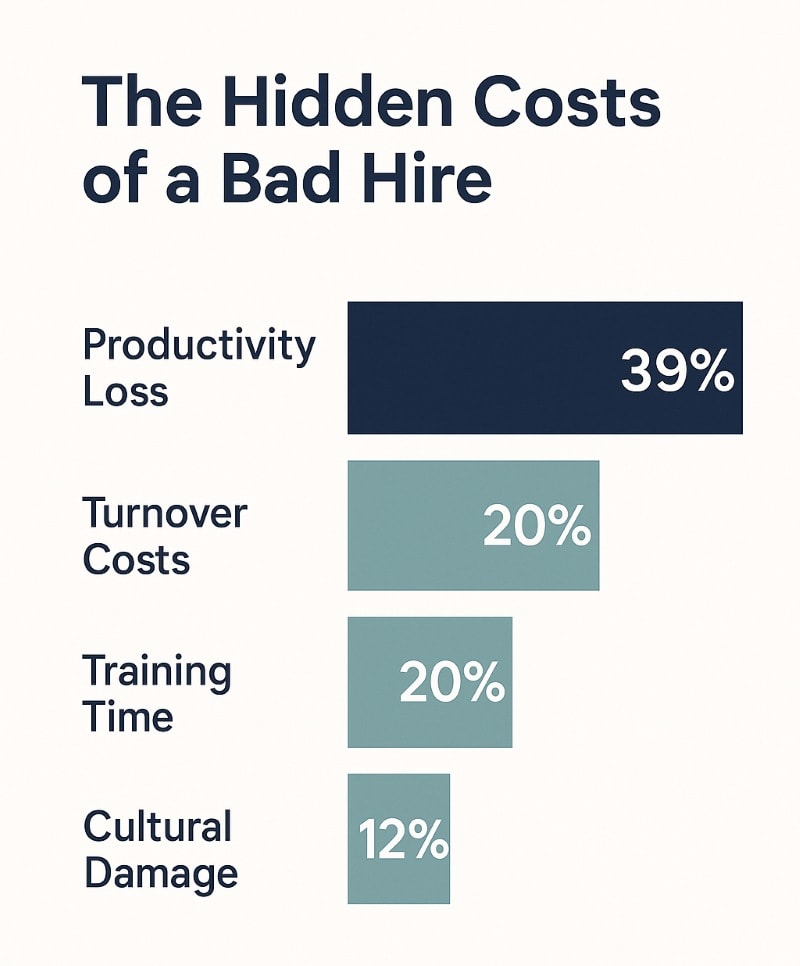
Step 1 – Define the Ideal Candidate Beyond the Job Description
Most job descriptions read like a checklist. Skills, degrees, years of experience, maybe a few buzzwords about teamwork. But if that’s all you’re using to evaluate fit, you’re hiring blind. Before defining your ideal candidate profile, it’s crucial to identify your hiring needs so you can address specific gaps within your team or organization.
An ideal candidate profile should reflect much more than a resume. It should capture what success in the role actually looks like—how the person thinks, collaborates, handles feedback, and aligns with your company culture.
Do they thrive in ambiguity? Are they assertive or collaborative by default? Do they lead through influence or execution? These aren’t soft skills—they’re success indicators.
This is where tools like the OAD behavioral assessment give you an edge. By identifying the cognitive and personality traits that define top performers in your team, you can stop guessing and start hiring with clarity.
It’s the difference between hiring someone who can do the job and someone who will excel in your environment. Especially for leadership or client-facing roles, this clarity can prevent major mismatches that don’t show up in an interview.
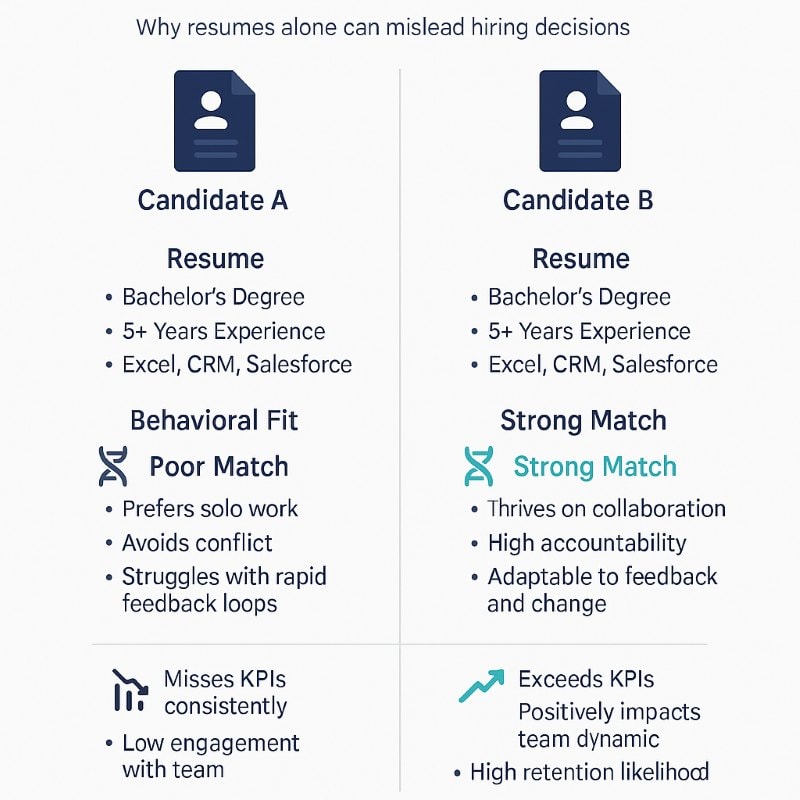
Defining your ideal candidate at this level also helps your recruitment team stay aligned. It ensures hiring managers, HR, and team leads are evaluating based on the same criteria—not personal bias or gut feel.
And when a candidate aligns with the role and the culture? They ramp up faster, contribute more, and stick around longer.
Step 2 – Set Clear Hiring Goals and Objectives
Before you write a single job description, you need clarity: what exactly are you hiring for—and why now?
Too many hiring decisions start with urgency but lack alignment. A manager needs help fast, HR opens the recruitment process, and the recruitment team scrambles to screen resumes. But without shared hiring goals, you’re aiming at a moving target.
Start by defining success for the open position. Are you looking for someone to scale a process, lead a team, or plug a short-term gap? Is the role tactical, strategic, or both? Get specific. Use the SMART framework—Specific, Measurable, Achievable, Relevant, and Time-bound—to shape hiring objectives that guide every decision.
For example: “Hire an ideal candidate with advanced technical skills and 5+ years of experience in B2B SaaS within 45 days.” That kind of goal sets the standard for qualified candidates, not just available ones.
Once goals are clear, it’s easier to select the right sourcing strategy—whether that’s job boards, employee referrals, or proactive outreach. And it’s easier to track progress. Your applicant tracking system (ATS) should reflect these goals in real time so the team doesn’t lose focus under pressure.
Hiring is never just about filling a seat. It’s about meeting a strategic need with the right candidate, on the right timeline, using the right process. When everyone’s aligned early, everything else moves faster—with fewer misfires.
Step 3 – Build a Talent Magnet, Not Just a Job Posting
In a competitive market, posting a job description isn’t enough. If your goal is to attract the best candidates, you need more than a list of responsibilities—you need a brand that draws people in.
Think of your recruitment process as a marketing campaign. Your job posting should highlight what makes your organization worth joining: your company culture, your values, your growth opportunities. Show—not just tell—why this role matters and how the right person can grow within it.
Great candidates don’t apply because of bullet points. They apply because they see a future.
But building a talent magnet isn’t just about the post itself—it’s about where and how you share it. Go beyond the usual job boards. Tap into job fairs, niche networks, and social media. Activate your current employees through a structured referral program. Their authentic stories and advocacy often do more than any copy ever could.
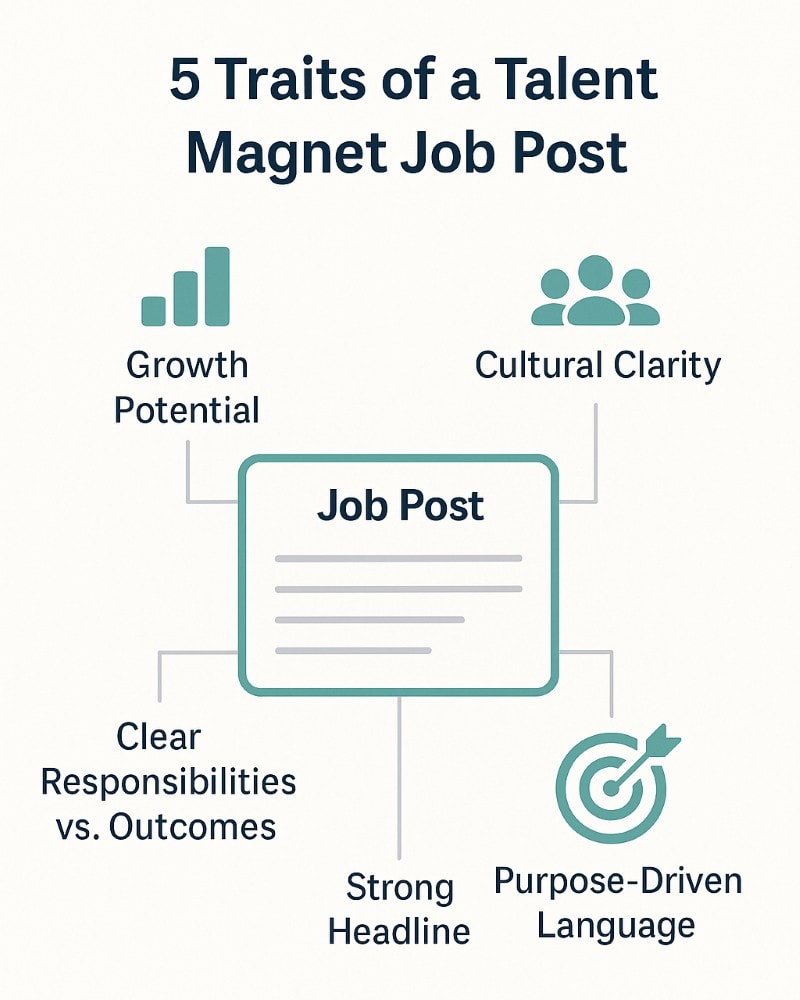
The more thoughtfully you build your talent pool, the easier it becomes to reduce time-to-hire and improve fit. And when your outreach reflects who you are as a company—not just what you need to fill—you’ll start attracting qualified candidates who are already aligned with your mission.
At that point, you’re not chasing talent. You’re choosing from the best of it.
Step 4 – Foster Collaboration and Communication Across Your Hiring Team
Even the most structured hiring process can fall apart without team alignment. Miscommunication leads to delays, confusion, and ultimately, poor decisions. To build consistency and speed into your recruitment process, you need clear roles—and constant communication.
Start by defining ownership at every stage. Who’s screening resumes? Who’s conducting interviews? Who owns the final decision? When the recruitment team, human resources, and hiring managers understand their exact responsibilities, you eliminate guesswork and create accountability.
Don’t rely on memory or email threads to keep things moving. Use shared dashboards or simple project management tools to coordinate progress, flag issues, and track timelines. Set regular touchpoints to schedule interviews, realign goals, and adapt to changing conditions in the talent pool.
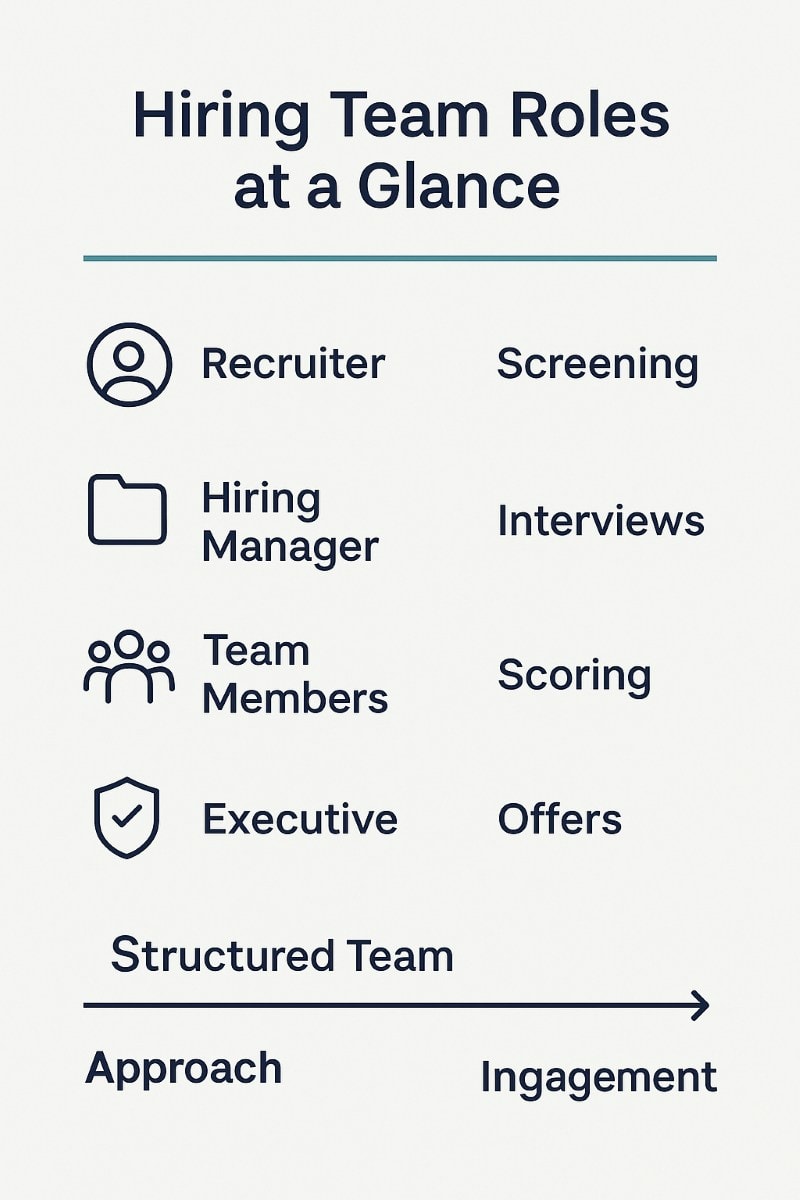
Strong communication also improves how you evaluate candidates. When your team shares observations in real time—and works from shared criteria—you reduce bias and increase fairness. This isn’t just good process; it’s good leadership.
In the end, collaboration doesn’t just speed things up. It improves hiring quality across the board and builds a stronger, more resilient organization.
Step 5 – Streamline Your Interview Process Without Losing Depth
A strong interview process is structured—but never mechanical. The goal is to move fast without sacrificing insight, ensuring every qualified candidate is evaluated thoroughly and fairly.
Start by building a repeatable system that integrates technical questions, behavioral assessments, and culture-fit conversations. This layered approach gives you a 360-degree view of the candidate—not just their resume.
Using tools like an applicant tracking system helps keep the process moving. Automating scheduling and follow-ups ensures momentum, so you don’t lose top talent to slow decision cycles or poor coordination.
Consistency matters. Make sure every candidate is evaluated using the same framework. That means structured scoring rubrics, standardized interview questions, and clear definitions of what success looks like in the role.
Also, transparency builds trust. Communicate early and clearly about the role, expectations, and your company’s values. When candidates know what to expect, they stay more engaged—and more likely to accept your offer.
Streamlining doesn’t mean cutting corners. It means removing friction while keeping the depth that leads to better decisions. Done right, this process helps you evaluate candidates with clarity and confidence—and leaves a strong impression of your company as one that values both speed and substance.
Step 6 – Use Behavioral & Data-Driven Tools to Evaluate Candidates
Great hiring decisions don’t come from gut feel. They come from clear, objective insight. If you want to build a high-performing team, your hiring process needs to go beyond resumes and interviews.
That’s where behavioral assessments and data-driven tools come in.
Incorporating tools like skills assessments, structured personality tests, and reference scoring systems helps you evaluate candidates based on how they think, work, and fit into your specific team dynamic. These aren’t add-ons—they’re competitive advantages.
By relying on measurable, consistent data, you reduce unconscious bias and increase the chances of identifying the right candidates—not just the most polished ones.
Just make sure any tool you use is validated, fair, and aligned with EEOC and local compliance standards. The goal isn’t to filter people out—it’s to understand how each person is wired to perform, lead, and grow.
At OAD, we’ve seen firsthand how science-backed insights can shift hiring outcomes—faster ramp-up times, stronger team fit, and lower turnover. When implemented thoughtfully, behavioral assessments don’t just make the hiring process more effective. They help build a team that performs better, communicates better, and lasts longer.
Step 7 – Conduct Thorough Background Checks Without Slowing Down
Background checks are essential—but they shouldn’t derail your timeline. A fast-moving recruitment process can grind to a halt when verification steps are inefficient, outdated, or unclear.
Still, skipping this step isn’t an option. Proper screening protects your team, your brand, and your culture.
To keep things moving, invest in automated or outsourced solutions that verify employment history, education, criminal records, and references with speed and accuracy. These tools help you make confident decisions without unnecessary lag—especially when you’re competing for qualified candidates.
Compliance matters too. Always ensure your background checks align with relevant laws (like the FCRA) and respect privacy standards. Transparency with candidates also goes a long way—people are more cooperative when they understand what’s being checked and why.
When done right, background screening supports—not stalls—your hiring process. It becomes a trust-building step that confirms alignment between what candidates present and who they truly are.
The result? Faster decisions, stronger hires, and a smoother path to onboarding the right people—without sacrificing due diligence.
Build a Talent Magnet, Not Just a Job Posting
Job postings aren’t a list of demands—they’re your company’s first handshake. And too often, that handshake feels cold, generic, and forgettable.
Top candidates aren’t just browsing jobs—they’re evaluating employers. They’re asking: Will this role challenge me? Will I grow here? Will I feel like I belong?
That means your job ad needs to do more than outline responsibilities. It needs to communicate purpose, culture, and growth potential. Think of it as a micro-pitch for your brand—because that’s exactly what it is. When crafting job postings, focus on writing clear and compelling job descriptions to attract the right candidates.
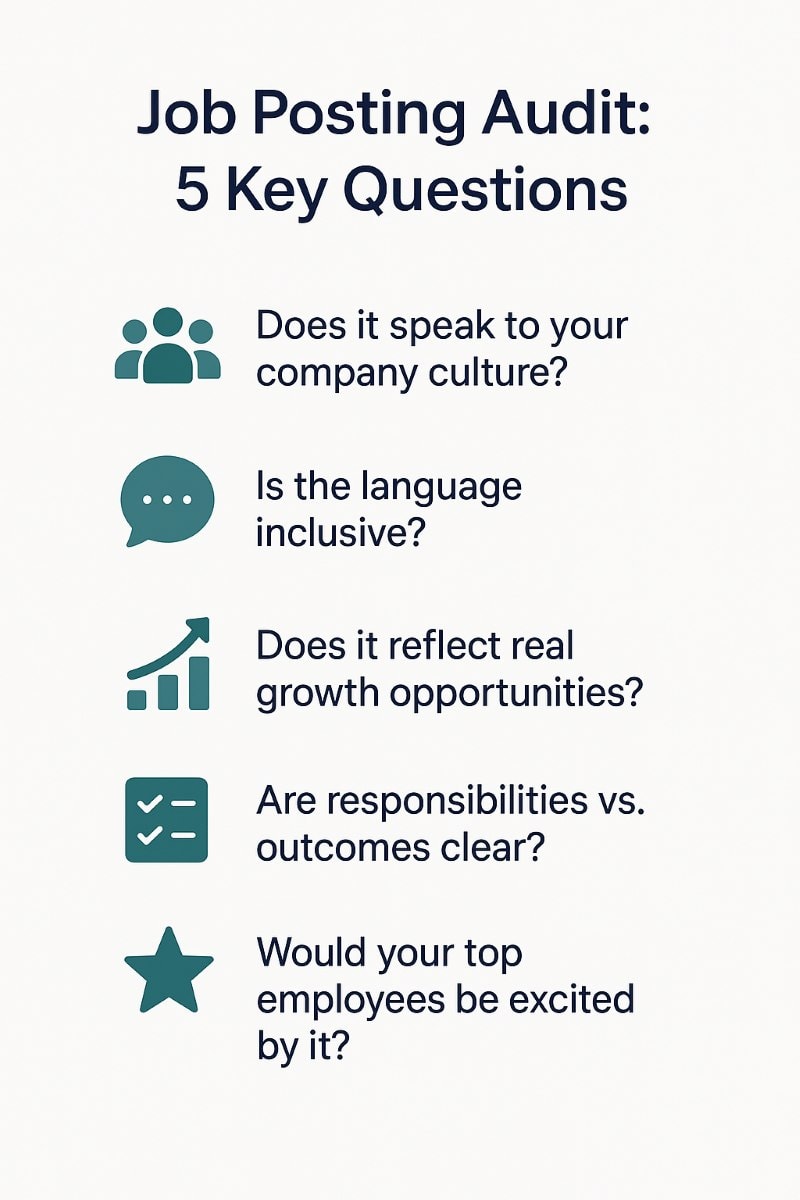
Don’t stop at job boards. Expand your reach across job fairs, social platforms, and most importantly—your own employees. Your current team can be one of your strongest talent magnets. Their enthusiasm (or lack of it) often shapes how others perceive your brand.
Also, pay attention to where and how you post. A role posted on niche industry sites or curated job boards often attracts more qualified candidates than a generic blast on big platforms.
And remember: an amazing job post can’t fix a broken process. Make sure the applicant tracking system (ATS) experience is just as human. Avoid the black hole effect—where candidates submit their info and hear nothing for weeks. That silence doesn’t just lose applicants; it damages your reputation. Efficiently managing job applications through an applicant tracking system helps ensure timely communication and a positive candidate experience.
In today’s hiring landscape, company culture and candidate experience are part of your value proposition. If you want to attract people who think like owners—not clock-punchers—you have to show them what that looks like from day one.
When creating a job ad, be sure to include a salary range to provide transparency and attract quality applicants.
Streamline Your Interview Process Without Losing Depth
Interviews are meant to uncover potential—not drain it. Yet for many companies, the interview process has ballooned into a maze of redundant steps, vague questions, and inconsistent evaluations.
Top candidates won’t tolerate it. If your process feels slow, confusing, or impersonal, they’ll disengage—or worse, accept an offer elsewhere before you even send a calendar invite.
So how do you create an interview flow that’s both efficient and insightful? Interviewing should be approached as a structured process, with clear steps and consistent evaluation criteria to ensure fairness and quality.
Start by eliminating steps that don’t add real value. For example, if your phone screen repeats what’s already on the resume, scrap it—or replace it with a structured culture-fit conversation.
Next, build a repeatable interview framework that reflects what actually matters for the role. That means including:
- Behavioral interview questions to assess mindset, adaptability, and communication style
- Technical questions aligned with role-specific outcomes—not just theory
- An intentional mix of in-person and virtual formats, depending on what’s most effective
For specialized or experienced candidates, be sure to include more technical questions to better assess their advanced skills and competencies.
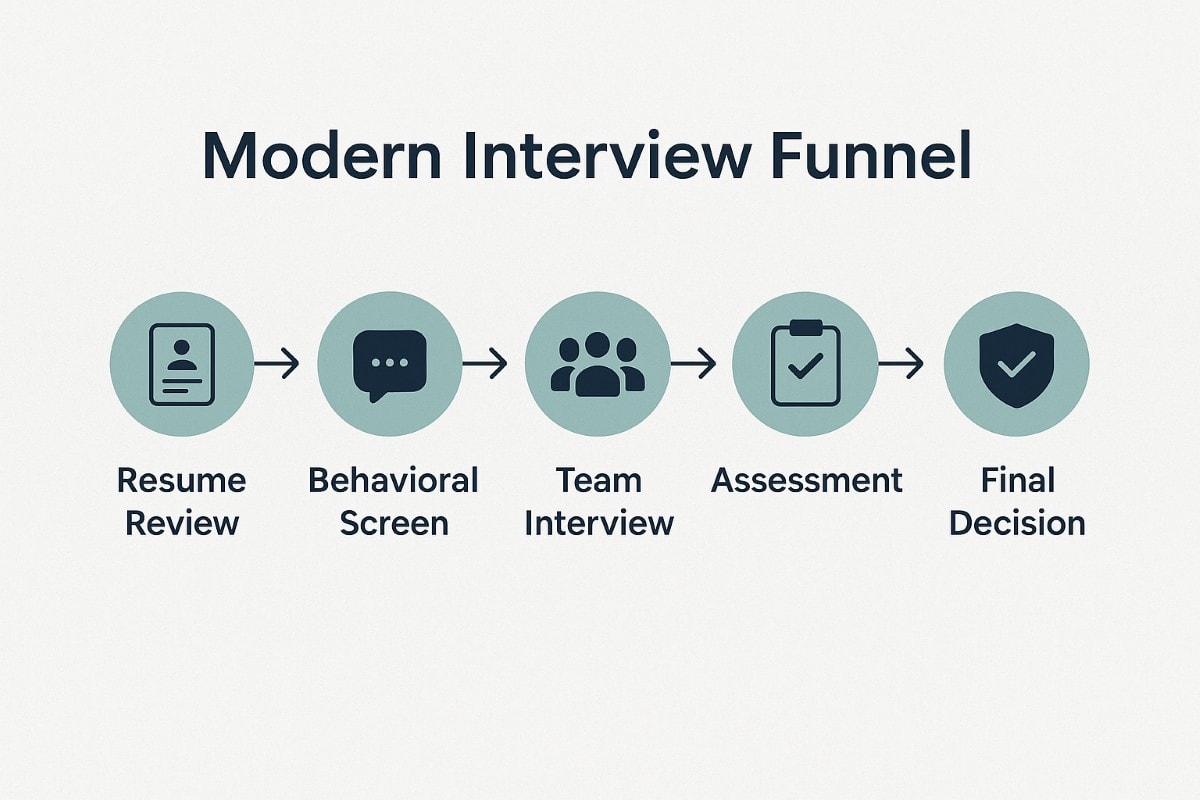
The best interviews feel more like strategic conversations than interrogations. That’s why tools like the OAD behavioral survey are so powerful. By layering behavioral insights into your interviews, your team can spot alignment—or misalignment—that isn’t always visible in answers alone.
Consistency also matters. If one interviewer asks deep questions while another wing its, the candidate’s experience suffers—and so does your data. Train your recruitment team to use a shared rubric and calibrated scoring system, especially for critical roles. After the process, review feedback from everyone who interviewed the candidate to make informed hiring decisions.
One final tip: schedule interviews as soon as possible after identifying qualified applicants. Waiting too long creates unnecessary churn in your talent pool, especially for competitive roles.
The interview process should feel like an invitation to excellence—not an obstacle course. Streamlining it not only saves time but also signals that your company knows how to make decisions with clarity.
Use Behavioral & Data-Driven Tools to Evaluate Candidates
Recruiting is a comprehensive process that includes sourcing, evaluating, and hiring candidates to build a strong team.
Gut instinct is not a hiring strategy. Yet many organizations still rely on “feel” when deciding who to bring onto the team—and they wonder why their new hires don’t stick. It’s essential to decide on the best candidate using objective data to ensure a successful hire.
When you evaluate candidates based on charisma or resume polish alone, you miss what really matters: behavioral alignment. That’s the difference between someone who can do the job and someone who thrives in your specific team environment.
This is where behavioral data changes everything.
Using tools like the OAD Survey, hiring teams can go beyond surface-level impressions to identify candidates’ core traits—things like assertiveness, resilience, attention to detail, and how they respond to pressure. These traits predict how well someone will adapt, perform, and collaborate. Determining key performance indicators (KPIs) is crucial to measure the effectiveness of your hiring process and ensure continuous improvement.
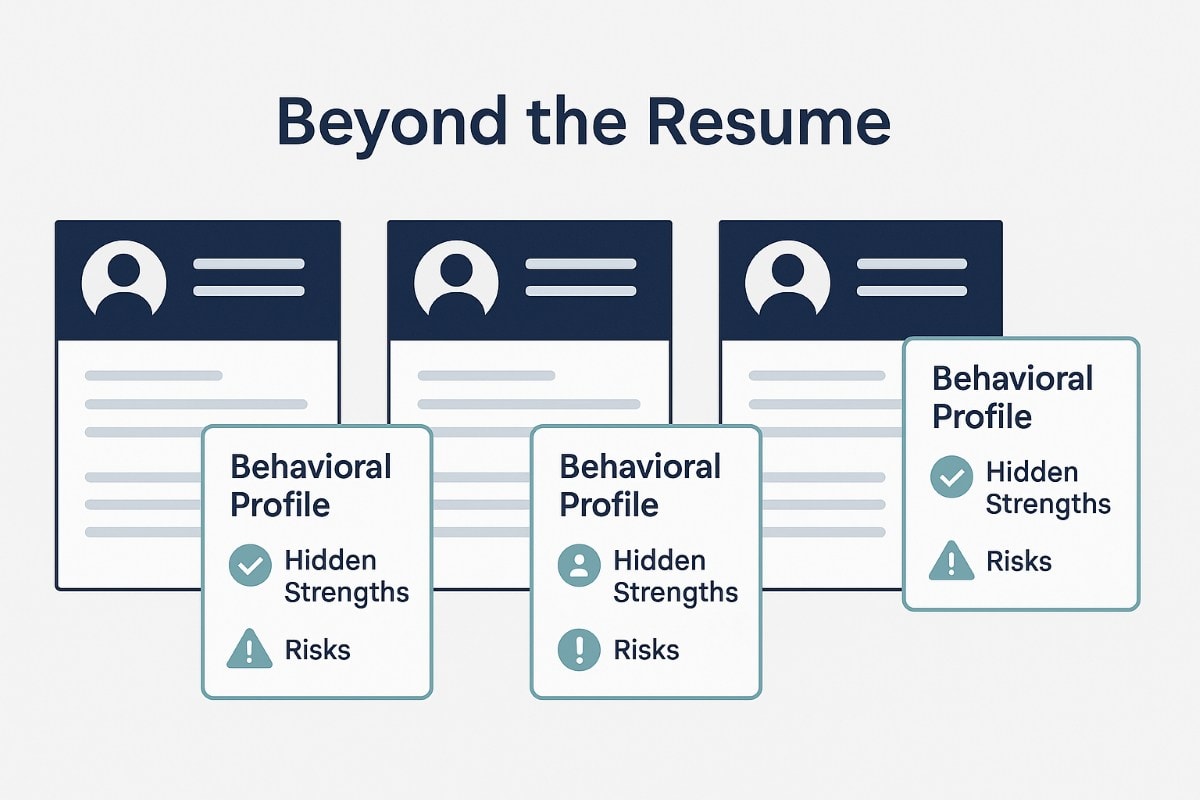
Why does this matter?
Because someone who crushed it at a fast-paced startup may struggle in a structured corporate setting—and vice versa. Behavioral insights allow you to make better decisions earlier in the recruitment process, saving time, reducing turnover, and improving performance outcomes. Once a candidate is decided upon, you can move forward with background and reference checks to finalize the hiring process.
Even better: when candidates are evaluated based on consistent, data-backed criteria, your hiring becomes more inclusive. You remove bias, reduce guesswork, and create a level playing field—especially important for smaller companies building their team from the ground up.
And let’s be honest: a bad hire doesn’t just affect the bottom line—it affects company culture. Misaligned team dynamics lead to friction, disengagement, and eventually, churn. Behavioral alignment helps avoid that before it happens.
The smartest companies don’t just evaluate candidates—they predict how they’ll behave once they’re on the job. That’s not just better hiring. That’s risk management.
Improve Candidate Experience from Application to Offer Letter
Candidates don’t just remember what you ask—they remember how you make them feel. Every email, every delay, every unreturned call becomes part of your brand story, whether you like it or not.
That’s why the candidate experience matters more than ever. In a competitive market, it can be the difference between a “yes” and a silent decline.
Let’s walk through it. A clear and respectful application process signals that your organization values time and communication. Timely responses, personalized interview follow-ups, and transparency around expectations go a long way—especially when high-quality candidates are juggling multiple offers. During initial screening, assess whether candidates are genuinely interested in the role to ensure strong alignment with your company’s needs and culture.
Once you’re ready to move forward, don’t drop the ball. Too many companies fumble at the finish line with vague details or slow timelines. Your offer letter should be fast, clear, and confident—reinforcing why they chose you in the first place.
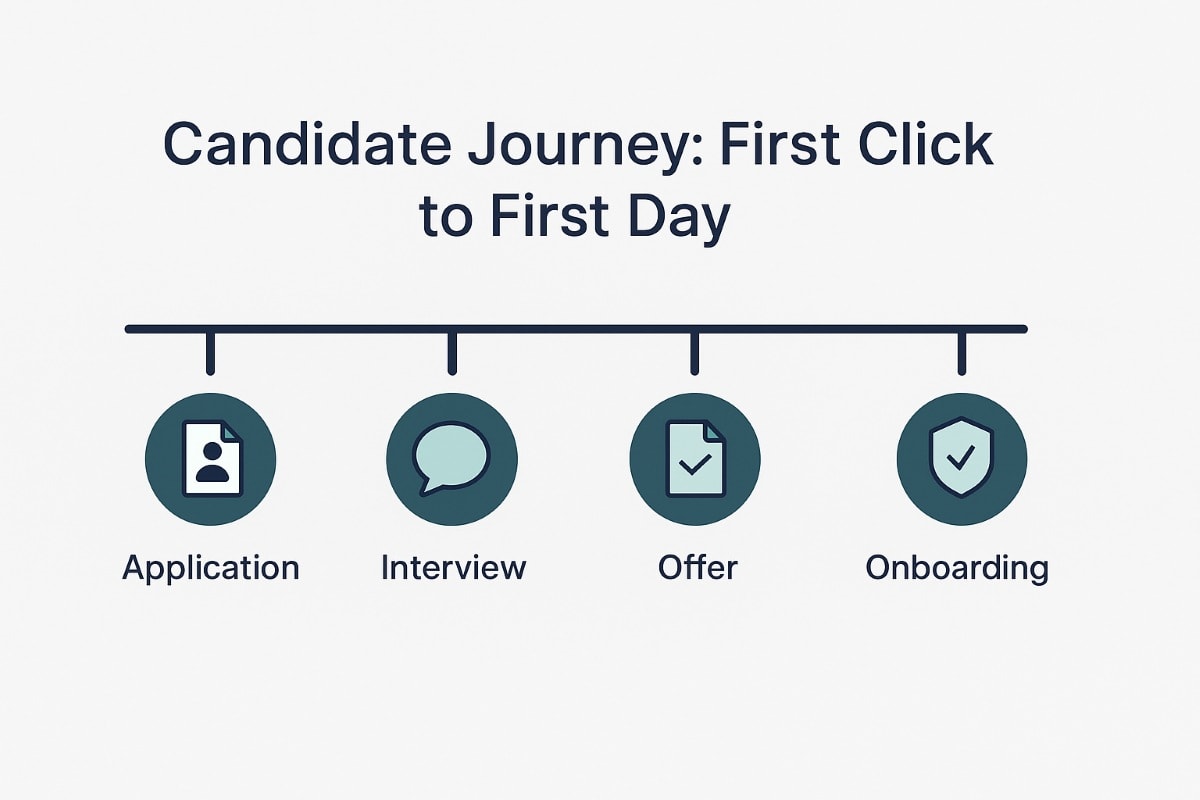
And don’t forget the background steps that matter:
- Make the reference check personal and relevant—not a generic formality
- Ensure background checks are timely, respectful, and compliant
- Be transparent about what’s being verified, including criminal history if applicable
These steps aren’t just legal checkboxes—they’re a reflection of how your company operates under pressure. How you treat someone at their most vulnerable moment (waiting for a decision) says everything about your leadership.
Need a benchmark? Look to Howard Schultz, who built Starbucks with a human-first philosophy. From frontline baristas to corporate execs, he believed that dignity, transparency, and purpose should be embedded in every interaction—especially during hiring.
Whether or not a candidate accepts, they’ll remember the experience. And they’ll tell others. That means your hiring process doesn’t just impact this quarter’s headcount—it impacts your reputation in the talent pool for years to come.
Retain Talent with Strategic Onboarding & Feedback Loops
Hiring isn’t over when the offer is accepted. In fact, the most critical phase begins after the “yes.”
Your onboarding process shapes how a new hire integrates, learns, and performs. Done well, it accelerates time to impact. Done poorly, it breeds confusion, disengagement, and early exits. A strong onboarding process helps new employees adapt quickly and thrive within the organization.
So what does strategic onboarding look like?
It starts before day one—with a plan. Assign mentors. Set clear 30-60-90 day goals. Ensure managers know how to support their new hire’s behavioral style, not just job responsibilities.
This is where tools like the OAD assessment can be transformative. By understanding how each new employee communicates, processes information, and prefers to be led, you give managers a blueprint for meaningful support—not guesswork.
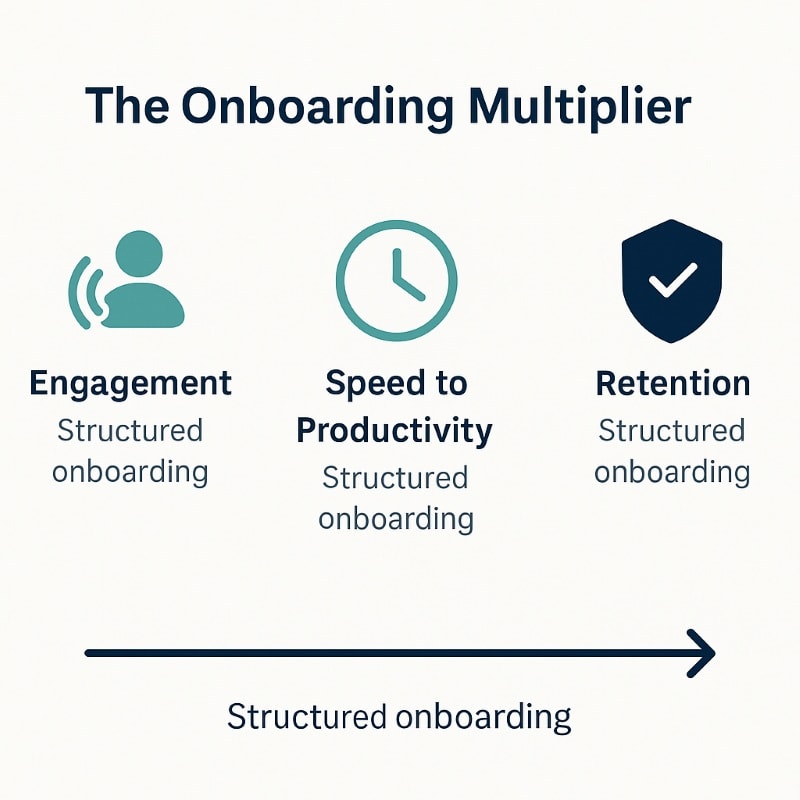
Retention isn’t just about salary or perks. It’s about feeling seen, understood, and aligned with the mission. When your current employees feel like their contributions matter—and that new hires are a cultural fit—they’re more likely to stay and grow.
You can also use feedback loops to continuously improve the process. Post-onboarding surveys, new hire interviews, and feedback from existing employees help refine both the hiring and onboarding experience.
In short, the new role isn’t just a seat to fill—it’s a relationship to build. And the quality of that relationship determines whether someone becomes a top performer or a flight risk.
Final Thoughts – Your Hiring Process Is a Strategic Asset
The companies that win long-term don’t just hire faster—they hire smarter. They treat hiring as a core business function, not an administrative task. And they build systems that attract the right people before the job is even posted.
As Elon Musk once said, “Every person you add to your team changes the culture.” The question is: are you shaping your culture on purpose—or by accident?
An effective hiring process isn’t just about filling roles. It’s about building momentum, protecting your team, and amplifying your mission. Aligning the hiring process with the company’s mission and values ensures that new hires contribute to the organization’s long-term goals and culture. Efficiently managing open positions also reflects the company’s organizational health and growth, signaling a proactive approach to talent acquisition.
Test the OAD Hiring Assessment Tools for free
You don’t need more resumes. You need better insights.
With the OAD Survey, you can move beyond gut feel and start making data-driven decisions that actually predict success. From screening to onboarding, OAD gives you the clarity to hire with confidence—every time.
Try it for free today and discover how behavioral data can transform your hiring strategy from reactive to remarkable.
